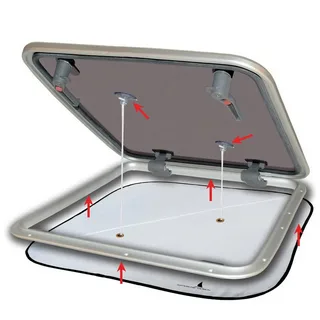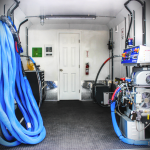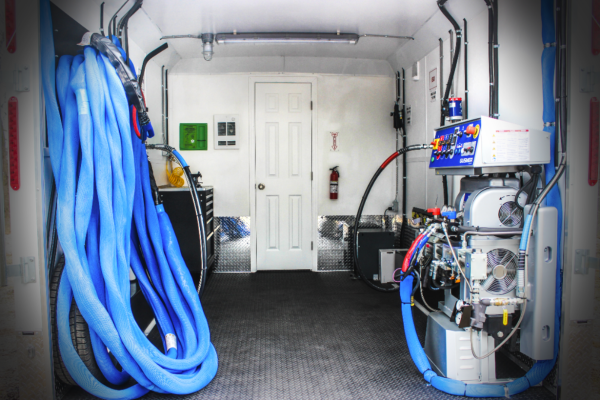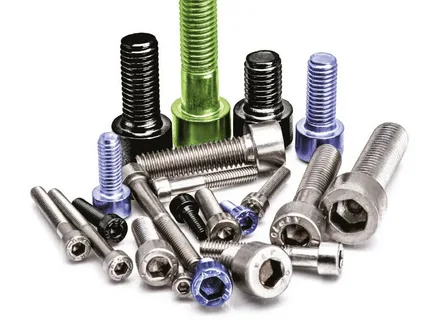In the majority of instances in which a hatch cover has been found to be leaking, poor maintenance is the main culprit. While hatch covers are durable, leaks can occur if the compression surfaces haven’t been aligned properly, or if any of the gaskets become worn or damaged. If the covers are distorted, this can also cause a leak.
Proper hatch cover maintenance should reduce the risk of leaks occurring (if it doesn’t eliminate the risk altogether), and hatch cover testing should be carried out to identify the source of any leak, should there be one.
Maintaining hatch covers and correctly
From corrosion to worn landing pads and aged gaskets, maintaining a hatch cover correctly is key to its longevity and leak prevention abilities.
The strength of a hatch cover can be significantly reduced by corrosion, and when this happens, there is an increased risk of deflection and potential loss of the steel to steel contact when, due to green seas, a hatch cover is loaded. Advanced stages of corrosion can seriously weaken a hatch cover, and make the aforementioned risks, definite and permanent problems.
If a hatch landing pad has become worn, it will put additional pressure on the hatch gasket, and if this wear becomes more than 4mm, it will start to cause damage that will inevitably lead to the landing pad needing to be repaired.
The rubber gaskets used on hatch covers can harden and lose their elasticity when exposed to the ozone, and gaskets that are significantly aged must be replaced at the earliest.
What about tests to detect a leak?
There are two commonly used tests for detecting leaks in a hatch cover: water hose leak detection and an ultrasonic test; the preferred method.
Let’s look at these a little more closely:
- Water hose leak detection
In this type of test, a powerful water jet is applied at a distance of 1-1.5 metres to a hatch joint, from a 20-50mm diameter hose that has been fitted with a 12mm diameter nozzle, at a speed of 1 metre every couple of seconds.
- Ultrasonic leak detection
Giving more accurate results than the hose test, ultrasonic watertightness testing must only ever be carried out using equipment that has been class approved, and must only be used during test procedures that have been approved. An electric signal generator is placed into the cargo hold while the hatches are securely closed, before a sensor is passed around the exterior of every compression joint. The sensor takes a series of readings that help determine any points of low compression or potential leakage spots.
Hose testing does have a number of limitations, all of which are overcome by ultrasonic testing, although it does require an expert to interpret the readings accurately, and the equipment, which isn’t typically kept on a ship, must be calibrated regularly.
Other forms of watertightness testing for hatch covers do exist, but most are inadequate when compared to the accuracy of ultrasonic testing, which outperforms in every category. Ultimately, it’s essential that hatch covers and all of their fittings be inspected at the end of every voyage in which cargo has been transported, to prevent leaks and mitigate potential damage, and the findings of each test should be recorded officially.











